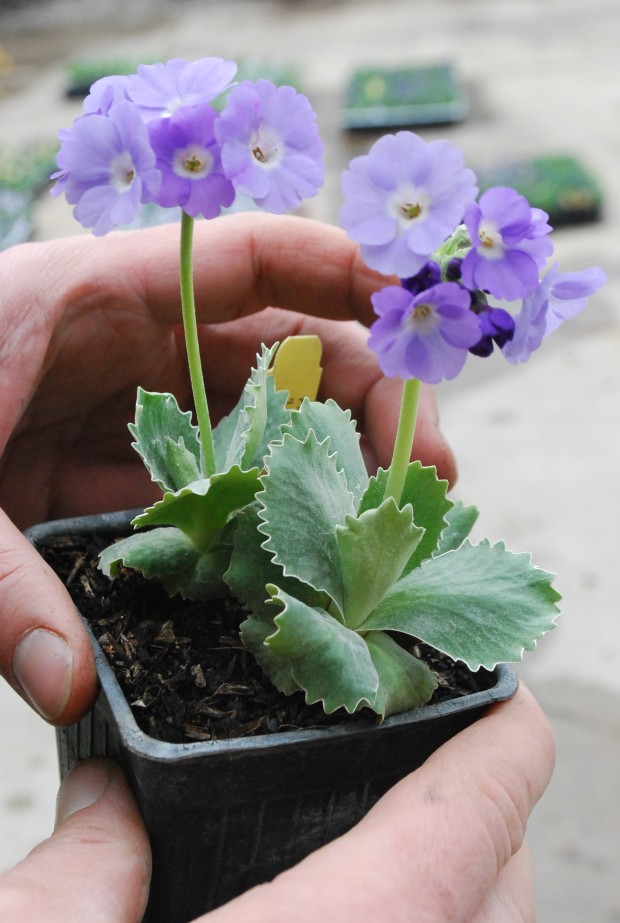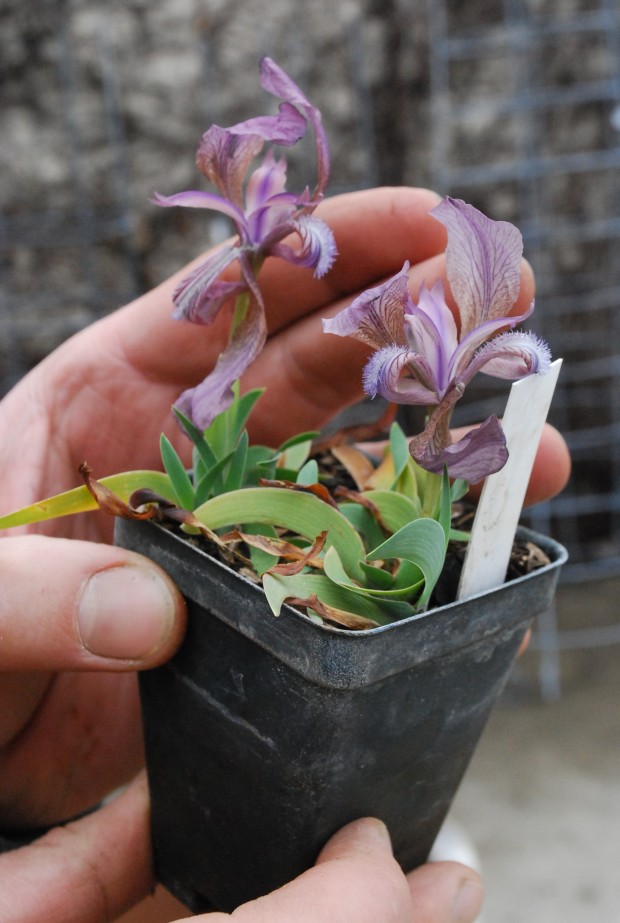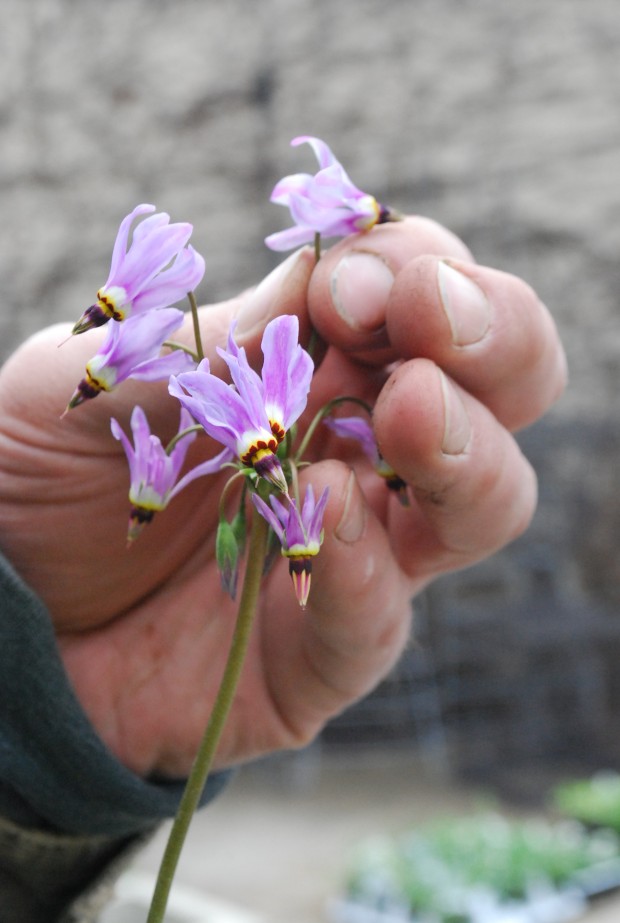
The plants Joseph brought from Arrowhead Alpines-I could not take my eyes off of them. To follow-a small sample of what he brought for the fair. The pale yellow hellebores – this was a first for me. They are so beautiful! The plants are well grown. How unusual they are is completely enchanting. All of the plants that were brought in and arranged this afternoon-enchanting. Itoh hybrid peonies. Virginia bluebells and snowdrops. Primulas of various types. Succulent bowls. A preview of summer annual combinations via Proven Winners. Pansy and lettuce pots. Spring twigs. Potted tulips and hyacinths. Some gorgeous doronicum in full flower-from Bogie Lake. The spring has been so slow in coming that I am having time to thoroughly anticipate and savor the season. Our garden fair-I will admit I am excited about it. Black and white shortbread cookies, as usual. The regular hearty sweet loaves. Great coffee and tea. A community of great growers. We are ready.

 I have never seen this narcissus before. If you have a big love for plants, come to the fair. I will say that how the shop looks-courtesy of Rob’s tireless work- is worth a look see. Hope to see you this weekend.
I have never seen this narcissus before. If you have a big love for plants, come to the fair. I will say that how the shop looks-courtesy of Rob’s tireless work- is worth a look see. Hope to see you this weekend.






